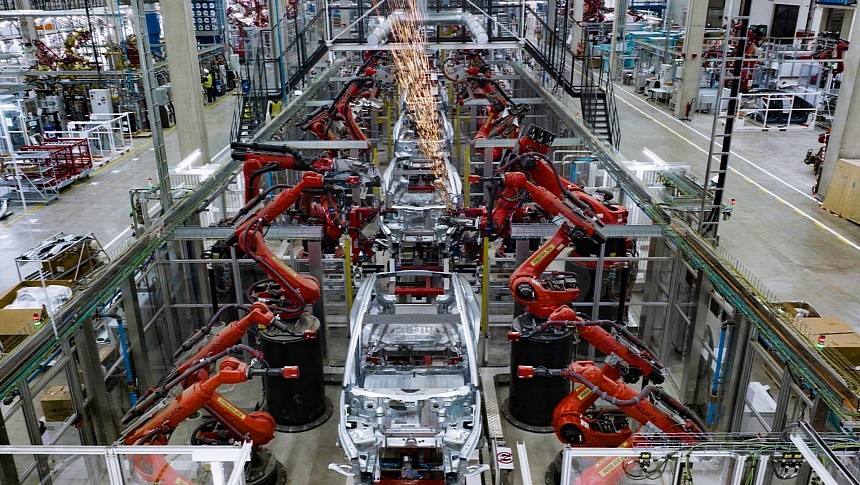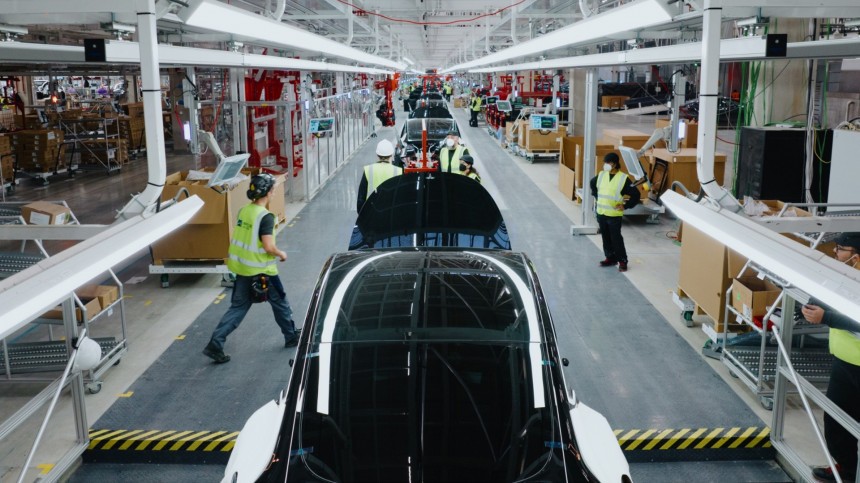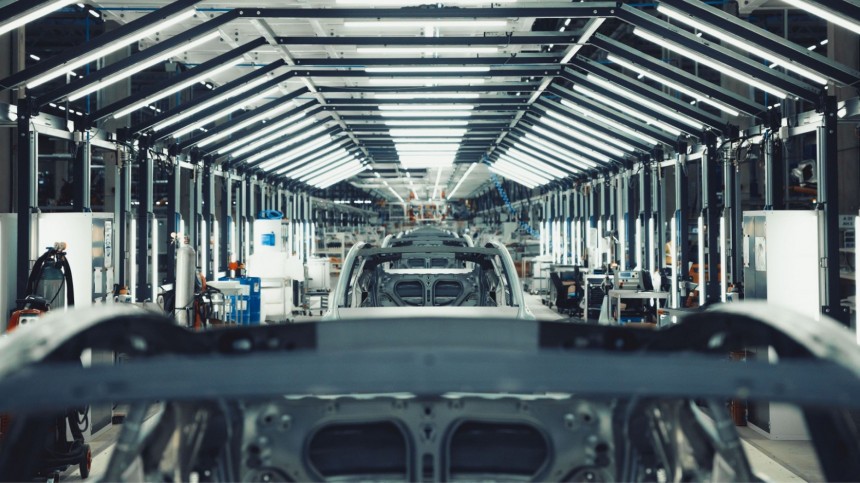Tesla insists it has enough demand for its cars despite constantly reducing their prices. It even created a new derivative for the Model S and Model X that allows it to sell them for $10,000 less so that it does not look like a discount. Yet, its inventories keep growing and must have exceeded 100,000 battery electric vehicles (BEVs) by now. The company may finally admit it has fewer buyers than it needs with what Business Insider discovered about Giga Grünheide. Tesla's German factory is making fewer Model Y units.
If you are wondering why that matters, the explanation is simple. Tesla cut production in Fremont and Giga Shanghai with the excuse that these factories needed new tooling and other improvements to manufacture Project Highland, a refreshed Model 3 that will probably get mega castings. Fair enough, but Giga Grünheide does not manufacture the electric sedan: its only product is the Model Y, the company's current best-seller. Theoretically, Tesla could sell every single unit of the electric crossover it could manufacture.
According to Business Insider, the American BEV maker proudly announced in March that the factory could produce 5,000 Model Ys per week. That number was expected to increase due to the high demand Tesla said these vehicles had. However, internal documents and statements from employees confirm that the company reduced the production target to 4,350 cars per week, 870 per day. On July 25, Tesla made only 692 BEVs. On July 28, the number was 806. The images disclosed by Business Insider show the target was still 870 daily units. And it gets worse.
Nowadays, the production target is 750 BEVs per day. That means Tesla is making only 3,750 vehicles per week if it manages to achieve the daily targets, which has not happened on at least two occasions. Nothing suggests this was an exception. In other words, it may be the rule.
According to Business Insider sources, Tesla is having a hard time hiring people to work at Giga Grünheide. This is something I wrote about in November 2021. Ironically, the BEV maker only made it worse when it laid off hundreds of temporary workers in June. That makes one wonder: if it needed more people there to manufacture cars, why did it fire these guys? Perhaps the lack of personnel is a good excuse not to meet the production targets the company announces but (secretly) cannot keep.
Wouldn't it be easier just to admit people are not buying BEVs as much as they were before? Most car companies reduced production because of demand restrictions. Customers are having a hard time with credit not only to buy new cars but also to purchase or even keep paying for their houses. Fuel prices increase every week, which will impact the cost of everything that needs gasoline or diesel to reach their sales points. Summing up, things look ugly, so it would be no surprise if they were also ugly for Tesla. Why would it be an exception in such a nasty scenario?
The company's detractors often say Tesla's most important product is its shares. If it did not keep the continuous growth narrative, the stock prices would drop. Again, that's what they do whenever a public company has bad financial results in a given quarter. In Tesla's case, a production cut would be highly welcome.
As I said before, the BEV maker must have more than 100,000 vehicles waiting for a new owner. Considering it sells around 400,000 each quarter, the inventory represents 25% of that quantity. If we were talking about working days, that would mean two weeks with the factories shut. It could give its workers mandatory vacations for a month. Although some customers could wait a bit more for their BEVs, that would allow the company to keep selling them without discounts.
In the current market environment, what Tesla may fear is that it would probably lead those willing to buy a BEV to another manufacturer. With so many more vehicles on offer, the only rational reason for anyone to stick to a Tesla would be Superchargers, but they will soon cease to be exclusive. Anyone with an emotional attachment to the company can wait.
Supposing Tesla could admit demand for its cars – and the range of its BEVs – is not as rosy as its executives want everybody to believe, the worst that could happen would be a market cap depreciation. Would it be so awful if it was worth $70 billion instead of $750 billion? It would still be worth more than Volkswagen, which sells way more vehicles than Tesla does – even with a demand crisis. Tesla may recover that when it starts selling robotaxis. According to Elon Musk, the production version of Full Self-Driving will arrive by the end of the year. So would robotaxis three to eight years ago, depending on which promise you still remember.
According to Business Insider, the American BEV maker proudly announced in March that the factory could produce 5,000 Model Ys per week. That number was expected to increase due to the high demand Tesla said these vehicles had. However, internal documents and statements from employees confirm that the company reduced the production target to 4,350 cars per week, 870 per day. On July 25, Tesla made only 692 BEVs. On July 28, the number was 806. The images disclosed by Business Insider show the target was still 870 daily units. And it gets worse.
Nowadays, the production target is 750 BEVs per day. That means Tesla is making only 3,750 vehicles per week if it manages to achieve the daily targets, which has not happened on at least two occasions. Nothing suggests this was an exception. In other words, it may be the rule.
Wouldn't it be easier just to admit people are not buying BEVs as much as they were before? Most car companies reduced production because of demand restrictions. Customers are having a hard time with credit not only to buy new cars but also to purchase or even keep paying for their houses. Fuel prices increase every week, which will impact the cost of everything that needs gasoline or diesel to reach their sales points. Summing up, things look ugly, so it would be no surprise if they were also ugly for Tesla. Why would it be an exception in such a nasty scenario?
The company's detractors often say Tesla's most important product is its shares. If it did not keep the continuous growth narrative, the stock prices would drop. Again, that's what they do whenever a public company has bad financial results in a given quarter. In Tesla's case, a production cut would be highly welcome.
In the current market environment, what Tesla may fear is that it would probably lead those willing to buy a BEV to another manufacturer. With so many more vehicles on offer, the only rational reason for anyone to stick to a Tesla would be Superchargers, but they will soon cease to be exclusive. Anyone with an emotional attachment to the company can wait.
Supposing Tesla could admit demand for its cars – and the range of its BEVs – is not as rosy as its executives want everybody to believe, the worst that could happen would be a market cap depreciation. Would it be so awful if it was worth $70 billion instead of $750 billion? It would still be worth more than Volkswagen, which sells way more vehicles than Tesla does – even with a demand crisis. Tesla may recover that when it starts selling robotaxis. According to Elon Musk, the production version of Full Self-Driving will arrive by the end of the year. So would robotaxis three to eight years ago, depending on which promise you still remember.






















